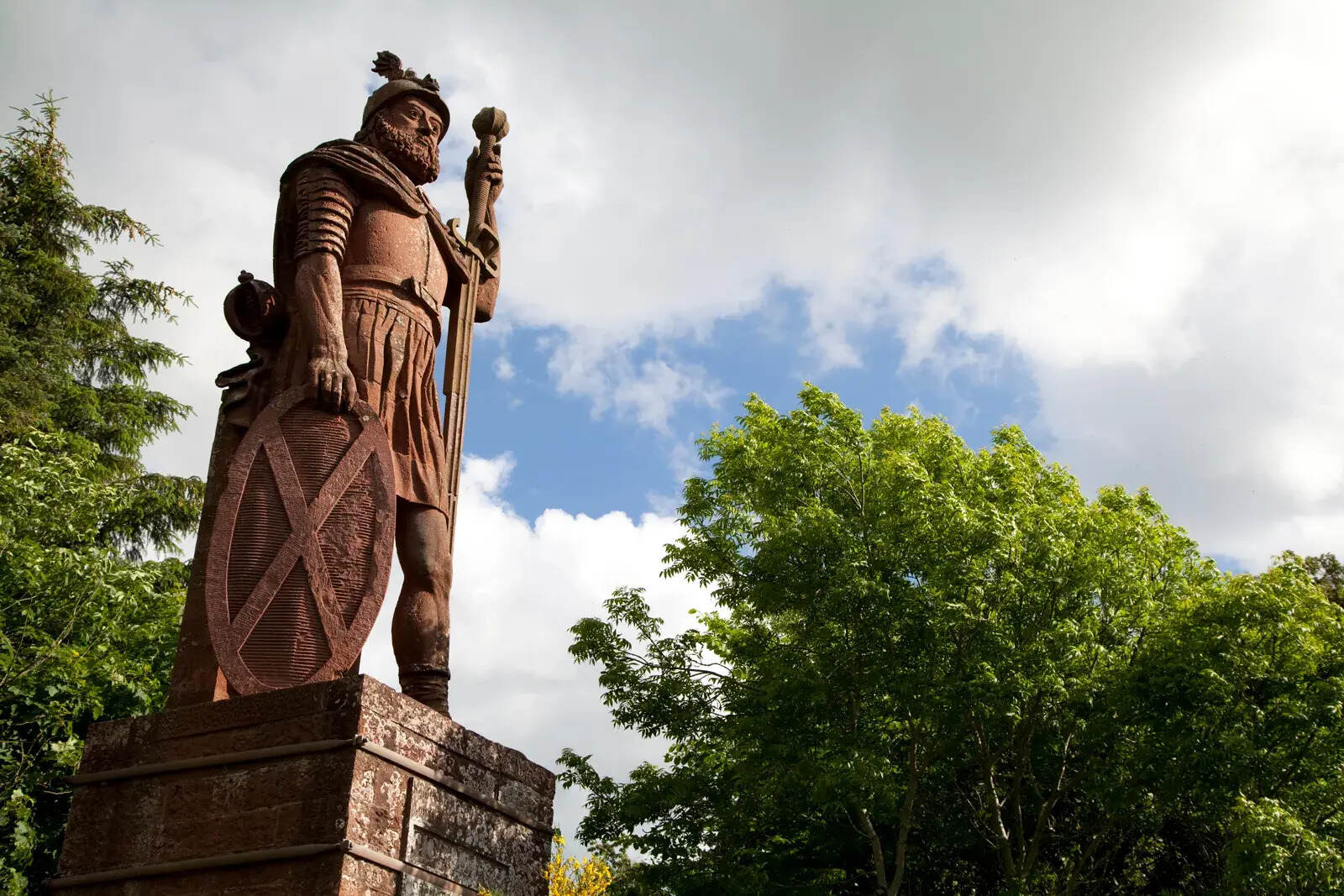
Who was William Wallace? William Wallace, a name echoing through the annals of Scottish history, stands as a symbol of resistance and freedom. Born around 1270, Wallace became a central figure in the Wars of Scottish Independence. His legendary status was cemented by his leadership in the Battle of Stirling Bridge in 1297, where his forces triumphed against the English. Despite his eventual capture and execution in 1305, Wallace's legacy endures. His life, filled with bravery and defiance, continues to inspire those who value liberty. Ready to dive into 35 intriguing facts about this iconic warrior? Let's get started!
Key Takeaways:
- William Wallace, the Scottish hero, was born in Elderslie, Scotland, and led the rebellion against English rule. His legacy lives on through monuments, films, and annual commemorations in Scotland.
- Despite myths and misconceptions, Wallace was not of noble birth, did not wear blue face paint, and had no historical evidence of a romantic subplot. His famous "freedom" speech is fictional.
Early Life and Background
William Wallace, a name synonymous with Scottish independence, has a fascinating history. Let's dive into some lesser-known facts about his early life and background.
- Birthplace: Wallace was born around 1270 in Elderslie, Renfrewshire, Scotland.
- Family: His father, Sir Malcolm Wallace, was a minor landowner and knight.
- Education: Wallace received an education, which was uncommon for someone of his social standing at the time.
- Languages: He was fluent in Latin and French, in addition to his native Scots.
- Height: Wallace was reportedly over 6 feet tall, making him an imposing figure in medieval Scotland.
Rise to Prominence
Wallace's rise to prominence is a tale of bravery and strategic genius. Here are some key moments that marked his ascent.
- First Battle: His first significant battle was the skirmish at Lanark in 1297, where he killed the English sheriff.
- Rebellion Leader: Wallace quickly became a leader of the Scottish rebellion against English rule.
- Battle of Stirling Bridge: In 1297, Wallace led the Scots to a decisive victory at the Battle of Stirling Bridge.
- Knighted: Following his victory at Stirling Bridge, Wallace was knighted and appointed Guardian of Scotland.
- Guerrilla Tactics: Wallace was known for his use of guerrilla warfare, which was highly effective against the English.
Guardian of Scotland
As Guardian of Scotland, Wallace had significant responsibilities and faced numerous challenges. Here are some intriguing facts about his tenure.
- Diplomatic Efforts: Wallace sought alliances with other European nations, including France.
- Seal: He had his own seal, which signified his authority as Guardian.
- Parliament: Wallace convened a Scottish parliament to legitimize his rule.
- Military Reforms: He implemented military reforms to strengthen the Scottish forces.
- Economic Policies: Wallace also focused on economic policies to support the war effort.
Battles and Strategies
Wallace's military strategies were groundbreaking for his time. Let's explore some of his most notable battles and tactics.
- Battle of Falkirk: In 1298, Wallace faced a significant defeat at the Battle of Falkirk.
- Schiltron Formation: He used the schiltron formation, a defensive tactic involving tightly packed spearmen.
- Hit-and-Run: Wallace often employed hit-and-run tactics to harass English forces.
- Castle Sieges: He led several successful sieges of English-held castles in Scotland.
- Naval Engagements: Wallace also understood the importance of controlling sea routes and engaged in naval battles.
Capture and Execution
Wallace's capture and execution were tragic yet pivotal moments in Scottish history. Here are some facts about his final days.
- Betrayal: Wallace was betrayed by a fellow Scot, John de Menteith, in 1305.
- Capture Location: He was captured near Glasgow and taken to London for trial.
- Trial: Wallace was tried for treason, despite arguing that he owed no allegiance to England.
- Execution Method: He was executed by hanging, drawing, and quartering, a brutal method reserved for traitors.
- Final Words: His reported final words were, "Freedom is best, I tell thee true, of all things to be won."
Legacy and Influence
Wallace's legacy continues to inspire people around the world. Here are some facts about his enduring influence.
- Monuments: The Wallace Monument in Stirling, Scotland, commemorates his life and achievements.
- Cultural Impact: Wallace has been immortalized in literature, film, and folklore.
- Braveheart: The 1995 film "Braveheart," starring Mel Gibson, brought Wallace's story to a global audience.
- National Hero: He is considered a national hero in Scotland and a symbol of resistance against oppression.
- Annual Commemorations: Scotland holds annual commemorations in his honor, including Wallace Day.
Myths and Misconceptions
Over the centuries, many myths and misconceptions have surrounded Wallace's life. Here are some clarifications.
- Noble Birth: Contrary to popular belief, Wallace was not of noble birth but came from a minor landowning family.
- Blue Face Paint: The blue face paint depicted in "Braveheart" is historically inaccurate.
- Romantic Life: There is little historical evidence to support the romantic subplot in "Braveheart."
- Sword Size: Wallace's sword, displayed at the Wallace Monument, is often thought to be exaggerated in size.
- Freedom Speech: The famous "freedom" speech from "Braveheart" is a work of fiction, not a historical record.
The Legacy of William Wallace
William Wallace's impact on Scottish history remains profound. His bravery and leadership during the Wars of Scottish Independence inspired countless generations. Despite his tragic end, Wallace's spirit of resistance and quest for freedom continue to resonate. His story, filled with battles, betrayals, and unwavering determination, highlights the struggle for national identity and sovereignty. Wallace's legacy lives on through monuments, literature, and films, ensuring his place in history. Remembering Wallace isn't just about honoring a hero; it's about acknowledging the enduring fight for justice and freedom. His life teaches us the value of courage and the importance of standing up for one's beliefs. Wallace's tale is a reminder that even in the face of overwhelming odds, the human spirit can triumph.
Frequently Asked Questions
Was this page helpful?
Our commitment to delivering trustworthy and engaging content is at the heart of what we do. Each fact on our site is contributed by real users like you, bringing a wealth of diverse insights and information. To ensure the highest standards of accuracy and reliability, our dedicated editors meticulously review each submission. This process guarantees that the facts we share are not only fascinating but also credible. Trust in our commitment to quality and authenticity as you explore and learn with us.


